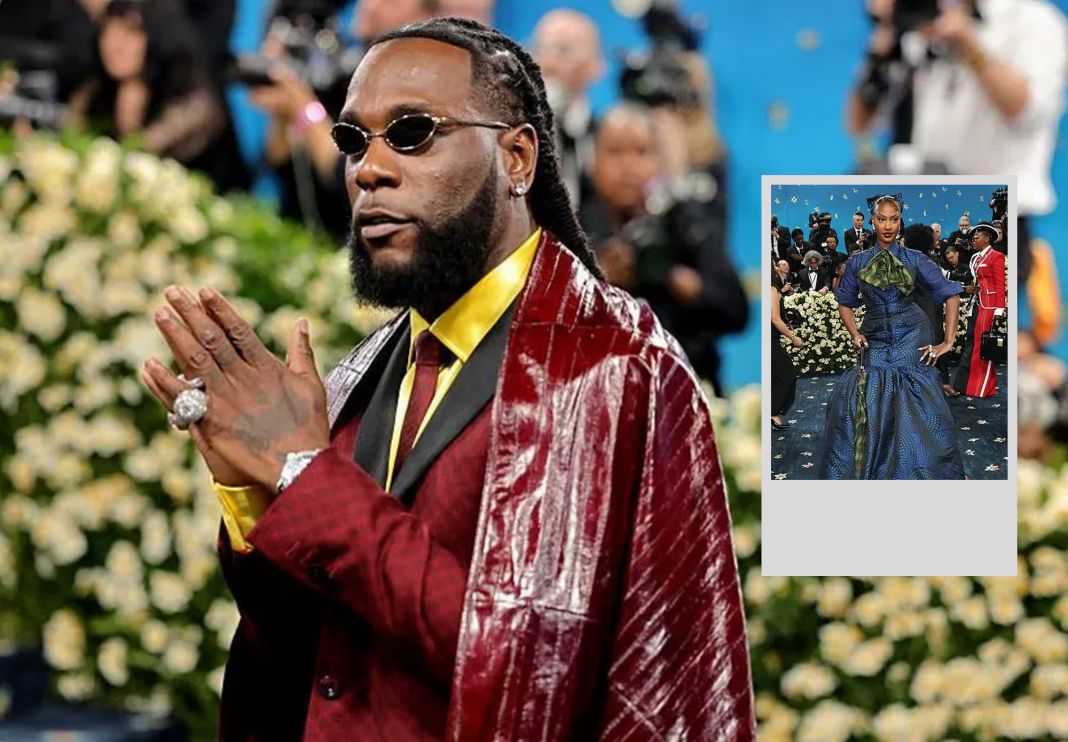Celebrating four decades of innovation and influence in menswear, British-Ghanaian designer Ozwald Boateng made a striking statement at this year’s Met Gala in New York. For the first time, Boateng dressed a diverse group of celebrities, blending his signature style with the gala’s theme, “Superfine: Tailoring Black Style.” His bold approach and rich heritage have cemented his place as a transformative figure in fashion, breathing new life into the traditions of Savile Row while pushing Black cultural style onto the global stage.
A landmark moment at the Met Gala
Earlier this month, Ozwald Boateng, often hailed as the “Peacock of Savile Row,” brought his unmistakable flair to fashion’s most glamorous night. Tasked with dressing sixteen celebrities, he curated looks that perfectly captured the Met Gala’s celebration of Black culture and style. Notable stars included African music sensations Tems, Burna Boy, and Arya Starr, as well as actors Ncuti Gatwa and Jaden Smith. The theme, “Superfine: Tailoring Black Style,” was a natural fit for Boateng, who has spent decades redefining how Black identity intersects with sartorial elegance.
For Boateng, the opportunity was not just about dressing stars but connecting with a new generation of admirers. “It’s, in a way, communicating to a new audience,” he told the BBC shortly after the event. His work blends sharp, form-fitting tailoring with bold colors and West African-inspired patterns, creating suits that are as culturally resonant as they are stylish. The Met Gala stage allowed him to showcase this vision on a grand scale, reaffirming his role as a pioneer in contemporary menswear.
The roots of a Sartorial icon
Born to Ghanaian immigrants, Boateng’s connection to African heritage runs deep, inspiring much of his design philosophy. He famously reinterpreted the iconic kente cloth into his signature “tribal” patterns, a nod to tradition through a modern lens. “It’s all about having a strong concept, having a thorough idea of what you want to achieve from the textiles,” he explained. The Met Gala’s focus on Black cultural influence resonated strongly, as Boateng emphasized, “How can you do that without Africa?”
This connection is personal as well as historical. Boateng recalls how, during colonization, Africans retained their traditional dress but adopted European tailoring to convey a sense of dignity and professionalism. “My father always wore tailored suits. You had to be smart at all times, that was something I was taught.” This fusion of cultures informs Boateng’s aesthetic, merging classic British tailoring with African vibrancy and symbolism.
One of the event’s highlights was Burna Boy’s last-minute outfit change, finalized less than 24 hours before the gala. The musician’s look—a striking red suit paired with a buttercup yellow shirt and an eel-skin cape—honored his Nigerian roots. Burna Boy told Vogue, “As a waterside pikin from the Niger Delta, the eel and fish in general are the lifeblood of my people—they symbolize survival, spirit, and the flow of tradition through generations.” Boateng’s designs, steeped in meaning, offered a sartorial storytelling platform for this cultural celebration.
Revitalizing savile row and redefining menswear
Boateng’s impact on Savile Row—long regarded as the epicenter of British tailoring—has been transformative. He was the first Black designer to open a shop there in 1995, arriving at a time when the street’s reputation and vitality were fading. “Savile as a street was a dying street,” Boateng recalls. “I effectively moved there in the early 90s and breathed new life into it.” His vibrant designs, flamboyant personality, and towering presence earned him the nickname “The Peacock of Savile Row.”
His journey began even earlier, influenced by a mother who was a seamstress and a childhood passion for color and style. At five years old, his favorite outfit was a purple mohair suit she made. Though he initially studied computing, Boateng soon followed his calling into fashion. Inspired by tailoring icon Giorgio Armani, who would later praise Boateng’s “elegance” and “cutting edge” designs, he launched his first studio in his early 20s, dressing celebrities like Mick Jagger and Spike Lee.
Despite early success, Boateng’s career faced setbacks. A bankruptcy in 1998, following a lost order due to the Asian economic downturn, led to personal and professional turmoil. Yet, he made a resilient comeback, expanding his business and moving to larger premises on Savile Row in 2002. Since then, Boateng has held prestigious roles including menswear creative director at Givenchy and earned an OBE for his contributions to fashion.
Legacy, family, and the future
Amid a flourishing career, Boateng has also raised two children, Oscar and Emilia, who attended the Met Gala with him dressed in their father’s suits. Though they are not yet drawn to fashion design, Boateng humorously admits to “slowly but surely seducing them into the fashion business.” Ultimately, he respects their choices: “If they find something they’re passionate about in a way I have, I am happy.”
Looking ahead, Boateng envisions global expansion for his brand. “The future is expansion,” he says. “Raising capital to really, really push the brand globally. I think it’s the moment in time—and it’s the right moment.” As he balances heritage with innovation, Boateng remains a dynamic force shaping the future of luxury menswear, while continuing to honor his African roots and British tailoring traditions.
Ozwald Boateng’s story is one of creativity, resilience, and cultural pride—a testament to how fashion can be both personal and political. From Savile Row’s renaissance to the spotlight of the Met Gala, he continues to redefine what it means to dress with purpose and passion in the 21st century.



